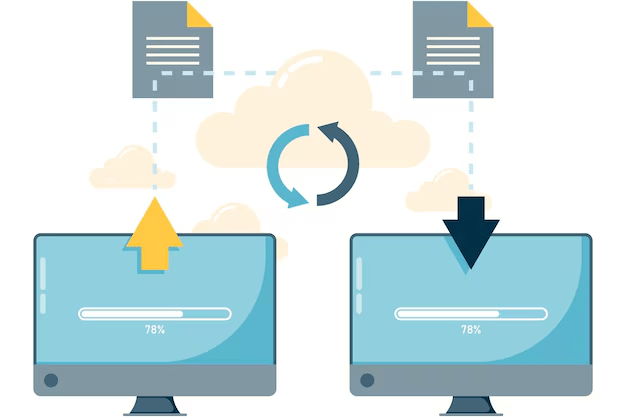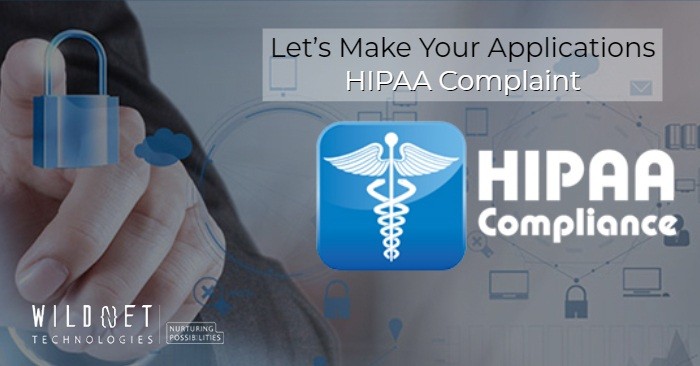When speaking about websites, it is vital to remember that website migration is one of the most important changes for a company or an organization.
This is taking a website to a new domain, switching hosting companies, or changing the layout, structure, and content of the website.
This procedure can lead to negative consequences if it is not performed properly.
It can impact your online activities, authority in the search engines, and users’ perceptions.
Nevertheless, hopefully, website migration can be uneventful and successful using the proper methods.
This is the place where you will be guided professionally
Title your “Website Migration Checklist: 11 Steps for Success” is designed to assist you in dealing with this intricate mechanism.
If you are a website owner, are involved in online marketing, engaging in SEO practices, or work in IT, this guide would help you.
We have divided the whole process into 11 steps so that no one becomes overwhelmed.
You have nothing to worry about from setting effective objectives for migration to monitoring the website after its migration.
You are going to be treated to revealing approaches, tested strategies, and practical guidance that will positively result in the realization of website migration.
Okay, let’s proceed to make the leap.
All There is to Know about the Website Migration Technique and Why It Is Crucial
Website migration is quite continuous in the fast and ever-changing world of .com.
It pertains to any situation that warrants the complete operation of the site.
For instance, it is possible that you are switching from the current web address to another, changing your web host, or changing the content management software.
Website migration is not a simple task.
It demands a great deal of thought put into planning and a high level of diligence when executing and evaluating after the migration.
But why is it so crucial?
The answer is to be found in the possible consequences that might follow because of this change.
If proper procedures are followed during and after the migration process, then the reader’s observation is that the performance of the site is enhanced, readers’ experience becomes satisfactory, and the site is quite likely to gain better rates in its search engine optimization.
On the contrary, if something goes wrong then a lot of problems are bound to be faced which will include damage on the links, losses on the viral traffic, and a fall in the rankings.
Therefore, it is very important to appreciate everything that concerns website migration so as to be able to forecast its successful outcome, which is the process that comes afterward.
In the next sections, we’ll look at the important considerations in the process of website migration.
Step 1: Set Realistic Migration Goals
Before beginning the migration procedure, it is important to clarify what the objectives of migration are.
What do you intend to accomplish through this movement?
Your objectives could range from spending less time to load the site, to improving the functionality of the site, to developing the site’s rankings on search engines.
Stating specific goals for the movement will influence the migration techniques you adopt.
It will assist you in making the right choices in every phase of the process.In addition, specific goals serve as a yardstick for the evaluation of the migration outcome.As such, it is suggested that you make time to deliberate with your team and other stakeholders.
Try to understand the end goal for this migration.
Some of the most common migration aims are as follows:
- Make the site fast and high-performing
- Improve the satisfaction and ease of use of babyed.com
- Increase website optimization ranking and presence
- Move to a better and more flexible system
- Deploy a new site design or a new organizational structure of the old content
- Add, or make more concise, the content of the site
Remember that your goals should be based on the SMART criteria.
Thus, it will help you avoid overranking yourself.
Now that you have stated all your objectives, you will need to keep these objectives in writing.
This is a good practice that can be followed to save information.
Step 2: Making the Site Audit
The next step in your website migration checklist is to conduct a comprehensive site audit.This now includes performing a thorough analysis of your existing site.
There is also a need to find out all the assets that need to be transferred.These can be web pages, articles, images, videos, among others.
Also, remember your metadata, that is, title tags, meta tags, and image alt.As the adage goes: you need to know your geography well before embarking on your resolution of where to migrate.
This is vitally important for tracking purposes.
Here are some helpful areas you can pay attention to during your site audit:
- Content: Examine all uploaded website pages, articles, or other content. Identify any content that could be outdated for removal or update if necessary.
- SEO: Check your current SEO rankings, select keywords, and backlink profile. This will enable you to bear in mind or improve your SEO activity levels post-migration.
- Usability: Investigate how much customers are satisfied with the usability of the site. Troubleshoot the site for navigability, speed of page load, its accessibility on ‘smart’ phones, etc.
- Technical: Find some technical issues like broken links, a number of pages with 404 errors, or other security bugs. All these should be taken care of prior to migration.
- Analytics: Scan the site’s analytics features and data to get the site’s traffic patterns, user’s activities, and conversion rates. This information will prove indispensable in determining the benchmarks and evaluating the succeeding activities post-migration.
Keep in mind that the desideratum of the site audit is not only to point out the components that have to be moved to a new site.
This is also a good chance for making some improvements on the existing site.
You may eliminate obsolete materials, repair things of a technological nature, and increase the SEO rating as well as the site friendliness.That’s why, carry out a careful site audit.
It is an important step in achieving successful website migration.
Step 3: Creating the Extensive website migration checklist
Once you’ve completed your site audit, it is time to stick your neck out and prepare the extensive website migration checklist.This website migration checklist will be a navigation guide for you in the process of migration.
It must list all the activities to be undertaken and the sequence in which they are to be carried out. Your website migration checklist will be different and only particular to yours.
However, here are some of the most common items that can be found in most of the checklists prepared for the migration of websites:
- Backup the Current Site: This is a very important step so as not to lose any data in case something goes wrong during the migration.
- Choose a Hosting Provider: Go through the reviews and select a hosting provider who meets all your technical requirements and budget.
- Set Up the New Hosting Environment: Adjust server settings, install the necessary software, and secure the environment.
- Migrate the Site Content: Move all the web pages, blogs, images, videos, and any content to the newly developed site.
- Set Up Redirects: 301 redirect each URL that has been changed in order to preserve some SEO elements and avoid bumping into any dead pages in the new web.
- Test the New Site: Carry out meticulous tests of the new site in such a way that all features and functionalities are performed well without compromising the user experience.
- Monitor the Site Post-Migration: Make it a priority to watch over the changing figures for site analytics, SEO rankings, and user responses to quickly rectify the emerging problems within the new setup.
Developing a thorough website migration checklist for the migration process will enhance your ability to remain on track.
It is certain that nothing significant will be missed. It will also enhance the effectiveness of moving all the information over to a new site or platform.
Hence, it is worth devoting comprehensive time and effort to formulate a full-fledged website migration checklist.It is a critical and key step in the process of migrating a website to a better one.
Step 4: Select A Good Time To Migrate To Your New Site
During the process of approaching the topic of migration, there are quite some times when the funky researchers have carried out field representatives.
It needs no further re-iterating that the right time for migrating your website is essential.
The consequence of this decision could be considerable regarding traffic to the site and the experience of users. Usually, it is preferred to implement during the off-peak hour or off-season.
For many companies, this will be on the weekends or towards the late hours of the night.
You may take a look at your site analytics to help with this.If the migration is scheduled to be done at a low traffic time, such lower impacts would be achieved on users.
It also gives you a cushion to resolve any problems that might come up before there is an increase in traffic again. Of course, there is still the issue of when staff members will be available.
Make sure the appropriate members of the team are present so that they supervise the transition and deal with any possible complications in a timely manner. Selecting a suitable window of time for migration is about compromise.
Balance the expectations of users against the ability of the team to execute. Optimal arrangements will facilitate gradual movement towards change as fast as possible.
Step 5: Set Up New Hosting Environment
The creation of a new hosting environment is a crucial step when one is trying to migrate a website.
The hosting environment will, in a way, affect the performance and reliability of your site.
When picking a new host, however, you should look into the uptime, speed, security, and customer support.
Also, make certain that the hosting environment complies with the general scope of your website.
For instance, should your site be hosted in BookisWcms. If the said environment should host sites that run on WordPress, make sure the new host supports WordPress installations.
The moment you have picked out a hosting provider, you should go on to setting up your new hosting environment.
This will include:
- Configuring server settings to meet the requirements of your site
- Installing necessary software and applications
- Ensuring security protocols are properly established
Following these necessary procedures will help prepare a favorable new hosting environment.
A new hosting environment is crucial for ensuring that the performance of the site is optimized.
Hence, it becomes necessary to perform all of these to complete the successful migration process.
Step 6: Data Migration: Moving Your Content
Once your new hosting environment has been prepared, you can start migrating the actual site content.
This process involves transferring all the web pages, images, videos, articles, and any other site content to the new environment.
Make sure that you use reliable migration tools or manual methods that ensure no data loss occurs during the transfer.
Also, it is important to validate the integrity of the data post-migration.
Data migration should be handled with utmost care to ensure the site’s content remains intact and functional.
Testing the site’s content post-migration ensures everything is in place and performs well.
Step 7: Set Up Redirects for Old URLs
Setting up redirects is a fundamental aspect of website migration.
Without proper redirects, visitors and search engines may encounter broken links or 404 errors when trying to access old URLs.
Implement 301 redirects to point old URLs to their new counterparts.
This process helps preserve SEO value and provides a seamless user experience by directing users to the correct pages.
Properly managing redirects ensures that you don’t lose any existing search engine rankings and helps maintain the website’s visibility.
Step 8: Testing and Quality Assurance
Testing the new site before launching it live is critical to ensure that everything works as expected.
Conduct comprehensive testing, including:
- Functionality Testing: Ensure that all features and functions are operational.
- Performance Testing: Check the site’s load times and performance metrics.
- Compatibility Testing: Verify that the site works well across different browsers and devices.
- Usability Testing: Ensure the user experience is intuitive and pleasant.
By conducting thorough testing and quality assurance, you can identify and resolve any issues before the site goes live.
Step 9: Monitoring Post-Migration Performance
Once the site is live, it is essential to monitor its performance closely.
Keep track of key metrics such as:
- Traffic Levels: Monitor any changes in traffic patterns or visitor numbers.
- SEO Rankings: Track the site’s search engine rankings and visibility.
- User Feedback: Gather feedback from users about their experience on the new site.
This ongoing monitoring helps you quickly address any issues and make necessary adjustments to optimize the site’s performance.
Step 10: Communicate with Stakeholders
Effective communication with stakeholders is crucial during and after the migration process.
Inform all relevant parties, including:
- Team Members: Keep your team updated on the migration progress and any changes.
- Clients or Customers: Notify clients or customers about the migration and any potential impacts on their experience.
- Search Engines: Update search engines with any changes in URLs or sitemap submissions.
Clear communication ensures that everyone involved is aware of the migration and can manage any related expectations or adjustments.
Step 11: Post-Migration Review and Continuous Improvement
After the migration is complete, conduct a final review to assess the overall success of the process.
Evaluate whether your initial goals were met and identify areas for further improvement.
Ongoing optimization and maintenance are essential for keeping the site performing well and meeting user needs.
Regularly review the site’s performance and make necessary updates to enhance functionality and user experience.
By following these steps in your website migration checklist, you can ensure a smooth and successful migration process.
Wildnet Technologies, a leader in the digital marketing industry with its expertise and experience in catering top-notch digital marketing services, SEO services, including Web and App Development services and more, to its 2100+ clients, including 26 Fortune 500 companies, is here to help!
Faq
Ques1. What processes are involved when migrating a website?
Steps include figuring migration aims, carrying out the site evaluation process, making a checklist, establishing a new hosting environment, and performing redirects testing prior to launching.
Ques2. Give an example of a website migration.
An example is migrating from one server to another or changing URLs from HTTP to HTTPS.
Ques3. How do you perform an SEO migration?
For SEO migration, keep URL structure intact, use 301 redirects, update internal links after migration, and observe SEO changes after the site has been shifted.
Ques4. Does migration of websites impact SEO?
Migration of websites may have some implications on SEO rankings as there may be some changes in rankings in the short term but with advice and execution the impact may not be felt for long.
Ques5. Is migrating a website easy?
The Wolff of the sheep is also regarded as a stubborn one made website migration through the theories, cold hard and SEO bleech seems rough after prepping its throughout imagination.
Ques6. When you migrate a website what happens?
When a website migration takes place, the relevant data and material of the site are moved to a different domain or platform respectively, the transition can affect how the users interact with the site and the ranking that the site gets with search engines.






